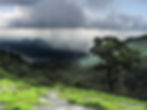In The Faerie Apothecary Mysteries, Moss Hill is being infiltrated by evil faeries, known as the Unseelie. But who are the Unseelie fae?

In mythology, the faerie people are divided into two courts. In this case, the term court is used to mean a home of the king and queen (English Dictionary). Those in the good graces of human royalty and nobility, who were generally good to humans, were known as Seelie faeries (Rose, 1996). Seelie, or Seely, faeries enjoy feasting, dancing, and rural settings. They are friendly and sociable, living in large groups. If one encounters a Seelie faerie, one can generally expect good treatment, although sometimes Seelie faeries enjoy a bit of trickery or mischief. Humans are generally left unharmed by encounters with the seelie.
The Unseelie, on the other hand, are faeries to be avoided. Faeries of the Unseelie court are malicious to humans (Rose, 2006). They are solitary and live in wilderness or places associated with death, war, or cruelty. They desire nothing short of the destruction of the human race.
As is common with the notion of faeries, Seelie and Unseelie fae are often associated with weather. Seelie faeries are generally thought of as spring faeries, who provide life and energy to the Earth. Unseelie, as you probably guessed, are associated with winter. They provide death and drain energy from the Earth. In The Faerie Courts on the Faeriepedia website, the Seelie and Unseelie are subdivided into courts for all four seasons. On that site, the Seelie court is defined as including the Spring and Summer courts and the Unseelie include the Fall and Winter courts.
In the series, the faeries of Moss Hill are Seelie faeries. They get along well with the residents of the town on the island and have the same characteristics of merriness and mirth as the Seelie of myth. The Unseelie characters described in the book are faeries who have chosen ill-natured paths in life. The books describe Unseelie fae types, such as goblins and bogarts, as being the same as other fae types with the difference being that they chose to lead solitary and malicious lives.
For example, in Herbs and Homicide, Carissa explains to a visitor to Moss Hill that bogarts are actually brownies. Brownies, in the book, are small human-like faeries about the size of a ten year old child. They are helpful and kind to humans. They often live in their homes and help with chores, tend to farm animals, and are kind to children. They may leave humans presents in gratitude. Humans are supposed to give gifts in return and be generally kind to the brownies. Boggarts, however, might live in the land near humans or may stay far from them. They will scare humans, undo their work, and may even harm farm animals and humans when they encounter them. They are essentially opposite ends of a spectrum, but are the same type of faerie. There is another example of a Seelie/Unseelie dichotomy in Chaos in the Countryside. In that novel, nature faeries, also called sprites, are referred to as pixies when they become "evil" or Unseelie.
The assumption in The Faerie Apothecary Mysteries is that all faeries have a dual good/evil nature depending solely on how they choose to live their lives. They are much like humans except that everything faeries do seems to be more extreme than what one would see in humans. This is true both in mythology and in the series.
So, what caused the Unseelie to venture to Moss Hill? What are their plans? Will they succeed? Can they be persuaded to become Seelie faeries? Find out in The Faerie Apothecary Mysteries!
Side Note: If you're interested in faerie stories and more about the Seelie and Unseelie courts, there are two you tubers whose videos I enjoy on the topic.
They are: The Scary Fairy Godmother and Fairy Folklore.
References:
Definition of "court" - English Dictionary. (n.d.). Retrieved from https://dictionary.cambridge.org/us/dictionary/english/court
Rose, C. (2006). Spirits, fairies, leprechauns and goblins: An encyclopedia. New York: W. W. Norton & Company.
The Faerie Courts. (n.d.). Retrieved November 10, 2018 from https://faeriepedia.weebly.com/the-faerie-courts.html

